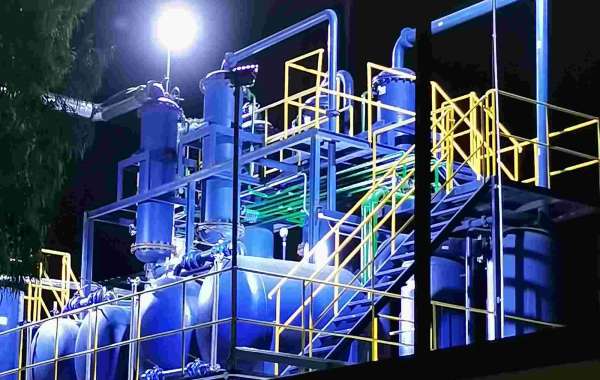Driven by the dual engines of environmental responsibility and economic opportunity, scientists and entrepreneurs are pushing the boundaries of what’s possible. Let’s explore the cutting-edge innovations making engine oil recycling cleaner, more efficient, and more valuable than ever before.
1. Advanced Re-refining Technologies
Traditional re-refining has been around for years, but new processes are making it superior.
Molecular Distillation: This is a significant leap over traditional vacuum distillation. It occurs at extremely low pressures, which allows for the separation of components at much lower temperatures. This prevents the "cracking" or degrading of the valuable base oil molecules, resulting in a higher yield of superior quality Group II and Group III base oils that can compete with virgin products.
Thin-Film Evaporation: Similar in principle, this technology uses a rapidly rotating blade mechanism to spread the waste oil into a very thin film over a heated surface. This allows for rapid and efficient evaporation of the volatile components with minimal thermal stress, again preserving the quality of the base oil.
These advanced separation techniques mean that re-refined oil is no longer a "lesser" alternative. It is a high-performance product that major lubricant blenders are now confidently using in their branded formulations, sometimes even marketing it as a "green" choice for environmentally conscious consumers.
2. Chemical Recycling: Breaking Down and Building Anew
Perhaps the most exciting frontier is chemical recycling, which moves beyond physical separation to break down the waste oil at a molecular level.
Pyrolysis and Thermal Cracking: This process involves heating the waste oil in the absence of oxygen, causing the long-chain hydrocarbons to break down. The output is not base oil, but a synthetic crude oil, fuel gases, and carbon black. This synthetic crude can be fed directly into a conventional petroleum refinery to be turned into gasoline, diesel, or even new plastics, fully integrating WEO back into the petrochemical value chain.
Hydrotreating: This process, borrowed from the petroleum refining industry, uses hydrogen at high pressure and temperature to "saturate" the molecules in the waste oil. It effectively strips out contaminants like sulfur, nitrogen, and the remnants of chemical additives, producing base oils of exceptionally high purity.
3. The Circular Economy in Action: From Waste Oil to New Products
Innovation isn’t just about making new oil; it’s about finding new uses for the entire waste stream.
Conversion to Grease and Lubricants: Some companies are bypassing the base oil stage altogether and converting filtered WEO directly into specialized lubricants and greases for industrial applications, creating a shorter, more efficient recycling loop.
Upcycling into Nanomaterials: Groundbreaking research is exploring the use of waste engine oil as a carbon source for manufacturing carbon nanotubes (CNTs) and graphene. These "wonder materials" have revolutionary applications in electronics, battery technology, and composite materials, potentially turning a waste product into a high-tech commodity.
Asphalt Modifier: Treated waste oil is being used as a rejuvenating agent for aged asphalt in road paving. It helps restore the flexible properties of old pavement, reducing the need for virgin bitumen and creating more durable roads.
Sustainability: The Bigger Picture
These technological innovations are bolstered by systemic shifts. Blockchain technology is being piloted to create transparent and verifiable tracking systems for WEO, ensuring it goes from the collection point to a certified recycler. Furthermore, the concept of "Extended Producer Responsibility" (EPR) is gaining traction, placing the onus on oil manufacturers to manage the entire lifecycle of their product, including its post-consumer phase.
Conclusion
The narrative around waste engine oil is being rewritten. It is no longer seen as mere waste but as a resource brimming with potential. Through advanced re-refining, groundbreaking chemical recycling, and creative upcycling, we are moving closer to a true circular model for lubricants. These innovations are not just cleaning up a mess; they are building a more sustainable and resource-efficient foundation for the automotive and manufacturing industries, proving that with a little ingenuity, even the dirtiest residue of our modern world can be transformed into something clean and valuable.














